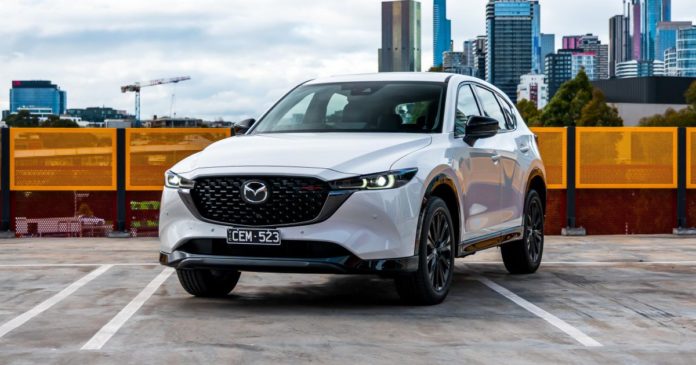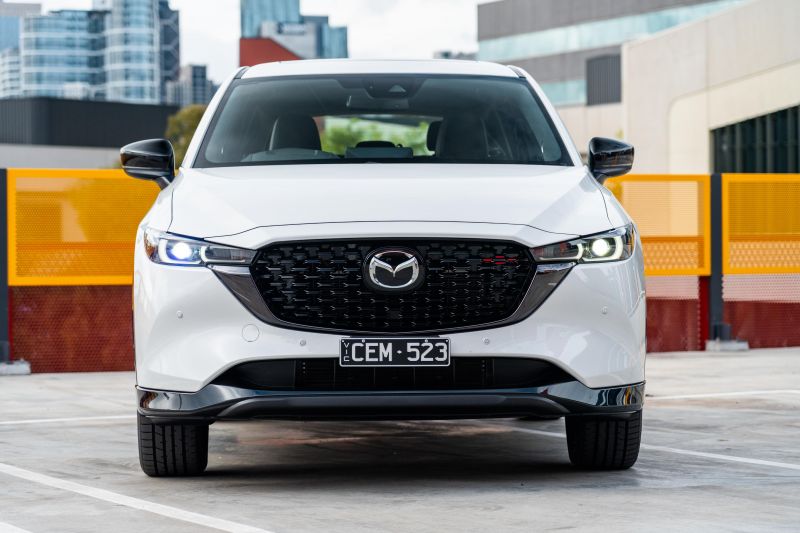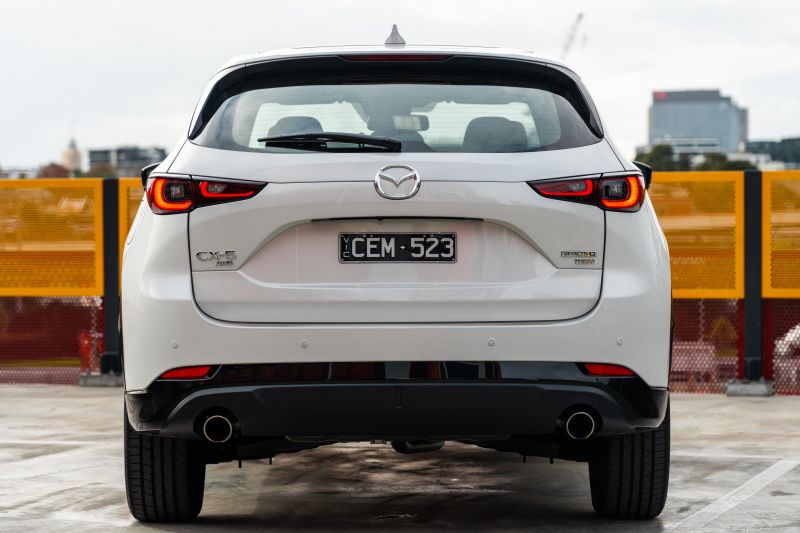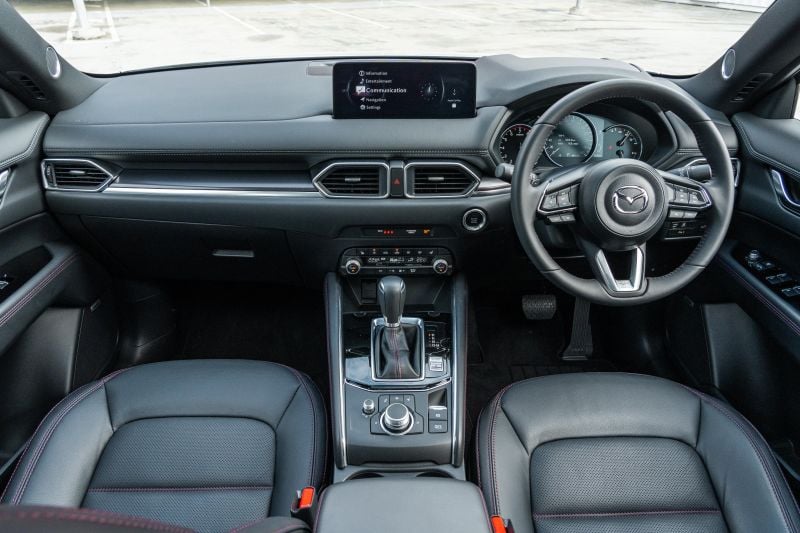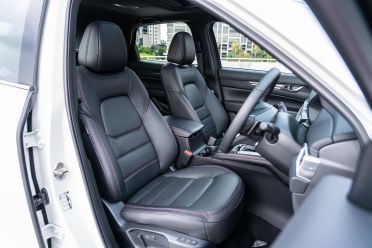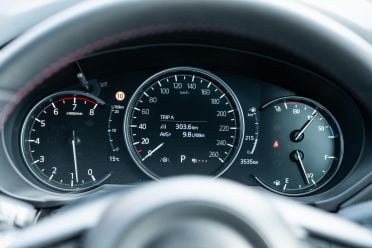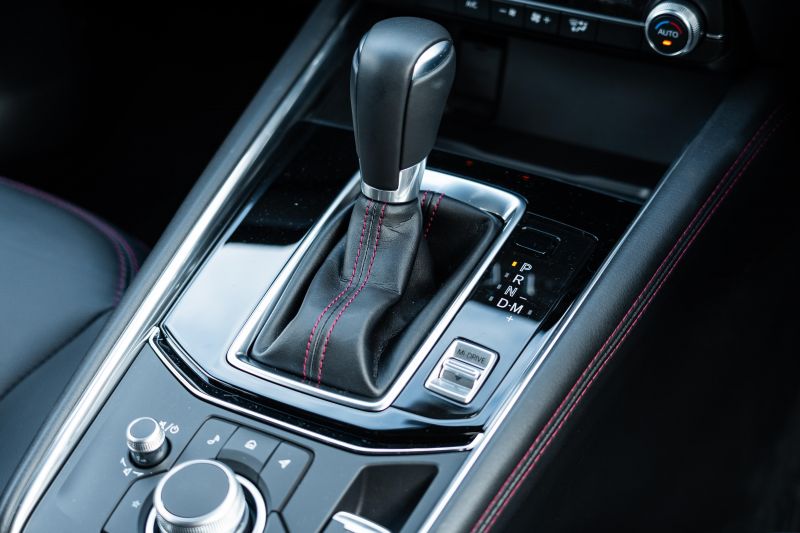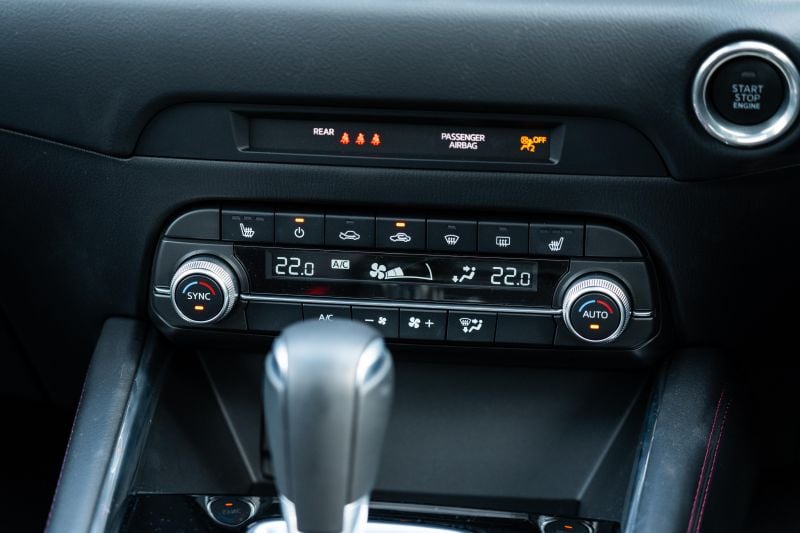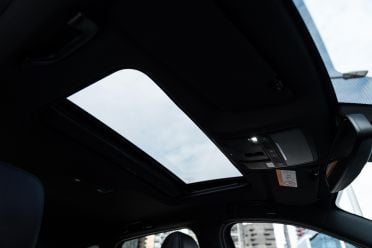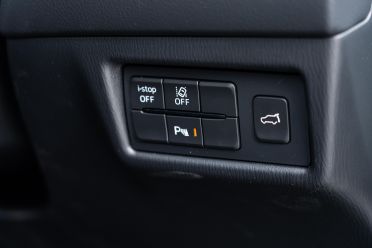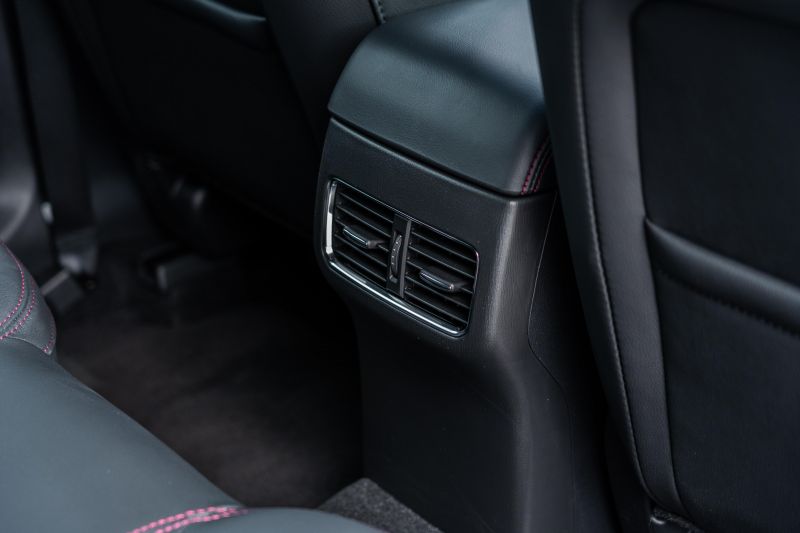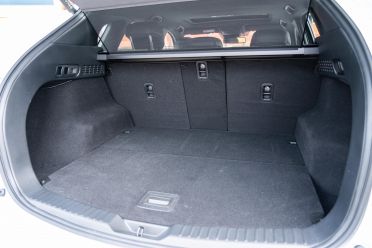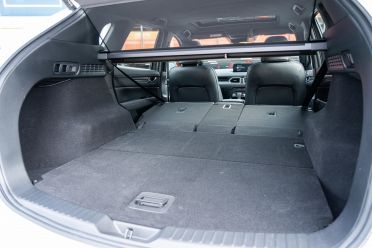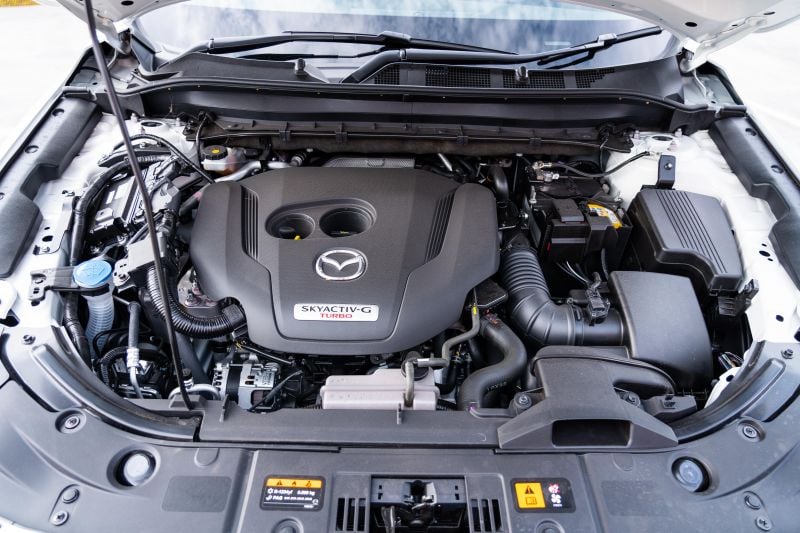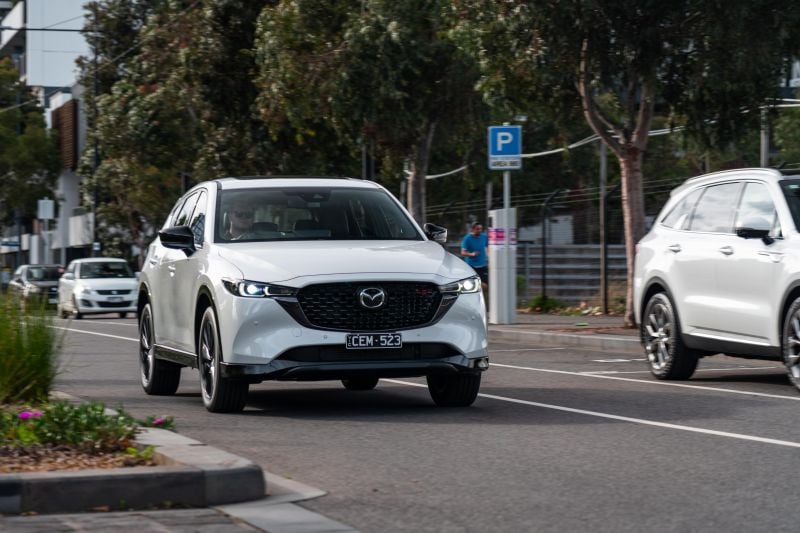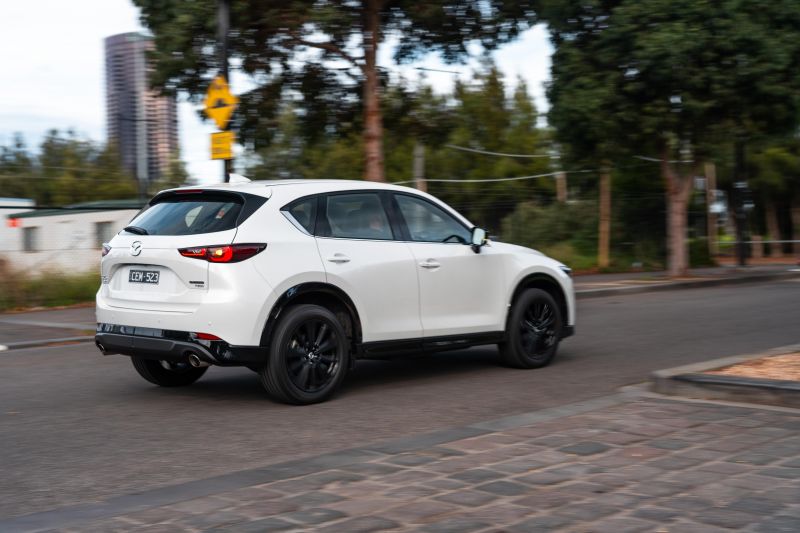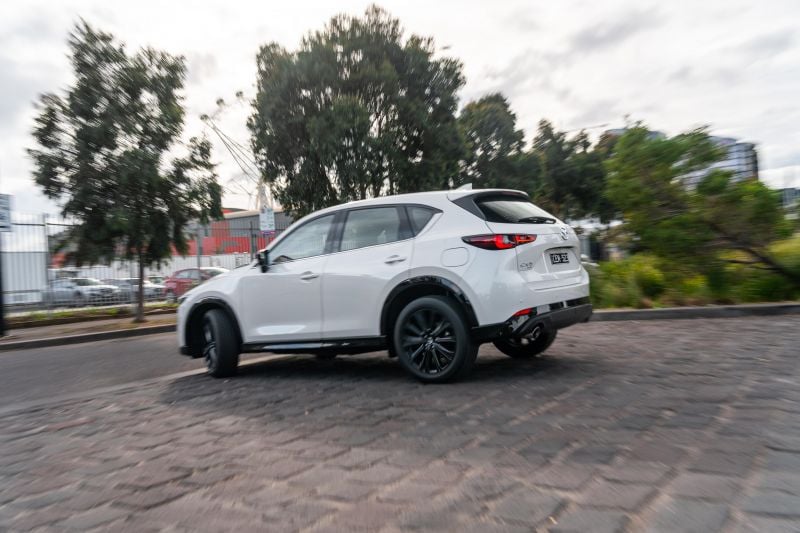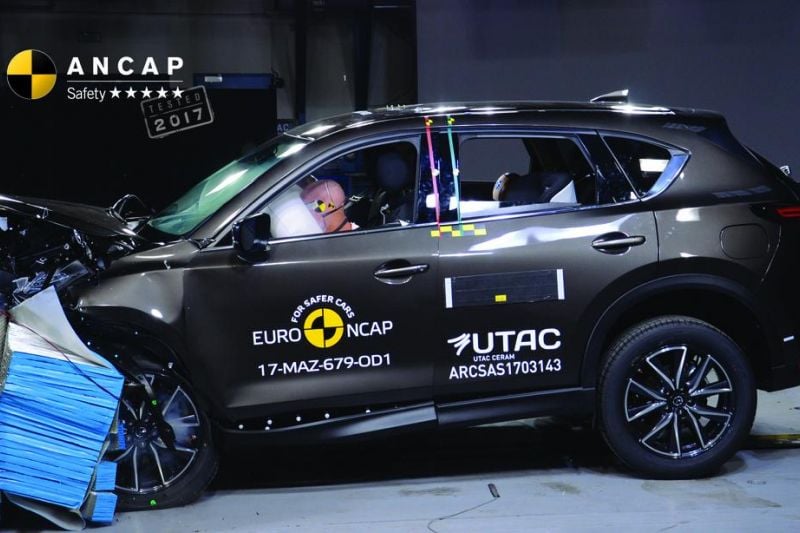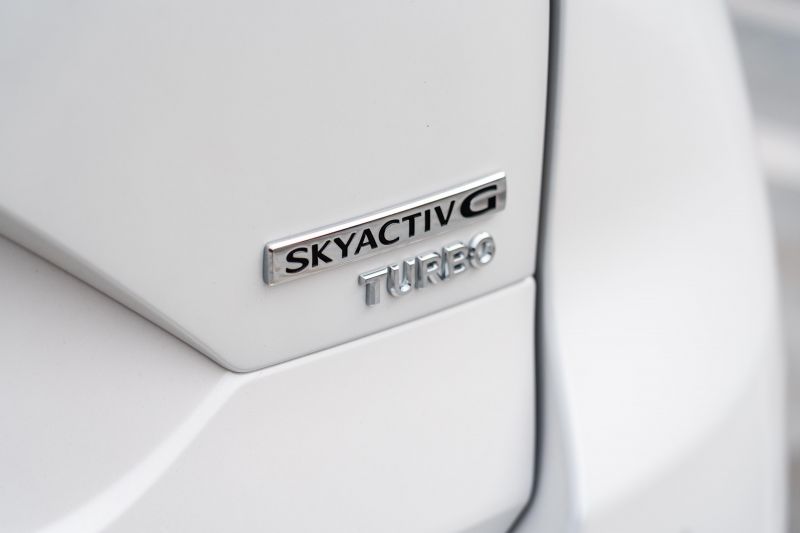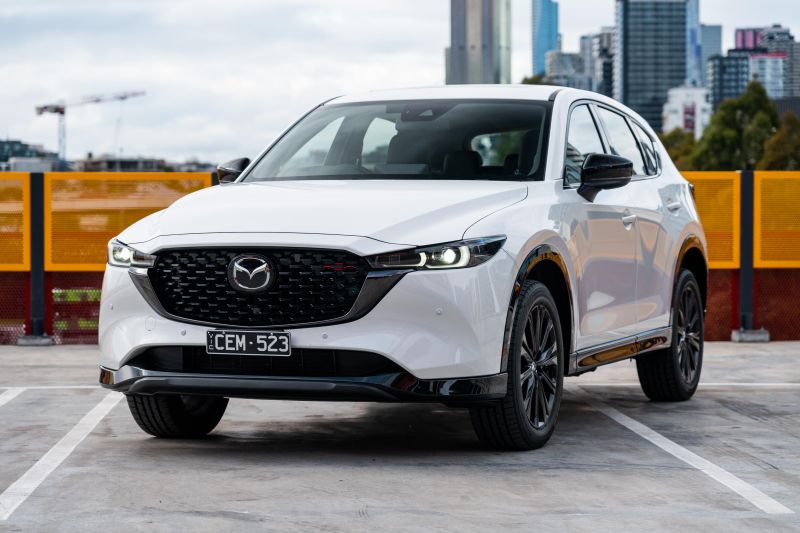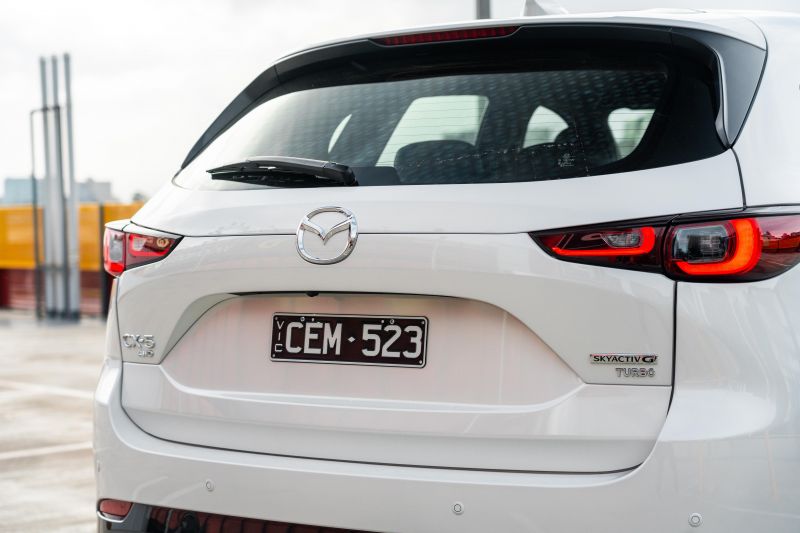The Mazda CX-5 is soon set to be a petrol-only model in Australia as the brand pushes towards its goal of electrifying its entire line-up by 2030.
The company recently detailed this move as part of a minor rolling 2024 model year update that’s set to go into force on CX-5 models to be delivered from January 2024 onwards.
On test here is technically an MY23 Mazda CX-5 GT SP which misses out on the hands-free power tailgate and new exclusive grille.
The GT SP is a blacked-out variant that’s second from the top of the range, and sits below the blingy Akera flagship. It’s the most affordable variant that can receive the more powerful G35 2.5-litre turbocharged four-cylinder petrol engine, which is featured here.
The current-generation Mazda CX-5 is getting a bit long in the tooth now, as it was first revealed in 2017 and received a major update in 2021. Rumours of a successor are brewing, though it’s unclear what it will be called.
Does the Mazda CX-5 GT SP still do enough to draw your attention in the hotly contended medium SUV segment? Read along to find out.
How does the Mazda CX-5 fare vs its competitors?
View a detailed breakdown of the Mazda CX-5 against similarly sized vehicles.

Mazda
CX-5
How much does the Mazda CX-5 cost?
The 2024 Mazda CX-5 range starts at $36,560 before on-roads for the G20 Maxx.
The GT SP is one trim level down from the flagship Akera and starts at $50,280 before on-roads with the G25 2.5-litre naturally aspirated four-cylinder petrol engine.
Our tester was equipped with more powerful G35 2.5-litre turbocharged four-cylinder petrol engine, which increases the asking price to $52,780 before on-roads. It was also finished in Rhodium White metallic exterior paint which adds an additional $795.
All in all, our CX-5 G35 GT SP tester costs $53,575 before on-road costs, or $58,332 drive-away for Victorian buyers (each state has slightly different taxes).
In terms of similarly priced medium SUV rivals, you’re spoilt for choice. There’s the Honda CR-V VTi LX ($57,000 drive-away), Hyundai Tucson Highlander N Line 1.6T ($52,650), Mitsubishi Outlander Exceed ($52,640), Nissan X-Trail Ti-L ($53,490), Peugeot 3008 Allure ($50,075), Toyota RAV4 XSE Hybrid eFour ($51,910), and the Volkswagen Tiguan 162TSI Elegance ($54,890).
2024 Mazda CX-5 pricing:
- CX-5 G20 Maxx: $36,560
- CX-5 G25 Maxx Sport: $40,280
- CX-5 G25 Maxx Sport AWD: $42,780
- CX-5 G25 Touring AWD: $44,920
- CX-5 G25 GT SP AWD: $50,280
- CX-5 G25 Akera AWD: $52,470
- CX-5 G35 GT SP AWD: $52,780
- CX-5 G35 Akera AWD: $54,970
All prices are before on-road costs
What is the Mazda CX-5 like on the inside?
Walking up to the Mazda CX-5 you’ll be able to tell it’s a GT SP variant due to its blacked-out exterior touches, as well as the red accent in the gloss black grille.
Thanks in part to the raised ride height, ingress and egress in the CX-5 is simple as you don’t need to step up or down. The seat is also at hip height which makes life even easier.
The CX-5 GT SP comes with black perforated leather upholstery that looks upmarket. The driver’s seat has electric adjustment, including electric lumbar support and memory. The latter comes in handy the most when multiple people drive the car.
Although the driver’s seat looks flash, I found the seating position to be way too high. Scott on the other hand who is incredibly tall said he really likes it… riddle me that.
In addition, the driver’s seat can be a little hard which is a pain on longer trips, and there’s a lack of side bolstering to secure you in the seat in bends.
Both front seats in the CX-5 GT SP are heated which is something that’s really appreciated on cold Melbourne mornings. It takes a while for the seats to actually heat up, but once they do they get HOT!
Ahead of the driver is a leather-wrapped steering wheel which is really soft and nice to hold. It’s covered in older-style buttons which have clicky rocker switches, as well as spongey push buttons.
There are also subtle paddle shifters mounted behind the steering wheel which give the CX-5 GT SP a sporty touch.
Behind these is an instrument cluster which should look familiar to you if you’ve sat in a Mazda from the last few years. There’s an analogue dial on the left for the revs, two analogue dials on the right for the engine temperature and fuel, as well as a 7.0-inch display in the middle.
Although the latter of these are crisp and clear, there isn’t much functionality to it. There are only a few information screen you can cycle through and the majority are filled with negative space.
Another frustrating part about this 7.0-inch digital instrument cluster is there’s a section on the right hand side that has a range projection gauge that’s very easy to get confused with the fuel gauge. You’re able to choose another layout design if that eliminates this gripe, however.
There’s a head-up display which comes in handy, while another quirky feature is the head-up display actually shows upcoming give way and stop signs, unlike virtually every other head-up display from other brands.
Moving across, the 10.25-inch infotainment system looks really high-resolution with snappy processing. The latter means the screen boots up quickly upon startup and new pages load quickly.
Our particular tester which is an MY23 example doesn’t have any touch functionality whatsoever, which is frustrating because you have no choice but to use the rotary dial for everything. Limited touch functionality is returning though for MY24 examples.
There is certainly a learning curve to using the rotary dial to control the infotainment system, but once you do it comes naturally. It can be a little tedious at points though when you need to scroll through big lists for example.
The CX-5 GT SP comes standard with wireless Apple CarPlay and Android Auto, and paired with my iPhone 12 Pro Max seamlessly – I didn’t experience any drop outs throughout the entire time I had the car.
Despite the stellar wireless smartphone mirroring performance, I found it hard to keep my phone battery topped up as the wireless phone charger was abysmal. There’s a lip that’s meant to hold your phone on the wireless charger, but in the CX-5 it’s too small causing my phone to slide off the pad whenever I braked.
I ended up resorting to using a USB cable to ensure my phone battery is actually charging on longer trips.
As standard there’s satellite navigation but I’d only use it if absolutely needed to, as trying to type in a destination takes forever and is incredibly fiddly thanks to the rotary dial. I know I’d rather stick to using Google Maps with smartphone mirroring.
I really appreciate that Mazda has chosen to retain physical buttons and knobs for the CX-5’s climate control cluster. It’s incredibly easy to use and understand.
The only thing I noticed with the climate control system is you need to have the temperature set really high for warmer air to actually start blowing out the vents. It’s not very often that I have a car’s climate control set to 24 degrees.
Around the cabin there’s a luxurious ambience with plenty of soft-touch materials. You don’t have to look too far however to find harder plastics.
There’s also a fair bit of piano black on the door armrests and centre tunnel which can get dusty, grimy and scratched really quickly.
The interior in the CX-5 GT SP feels quite dark despite the subtle lashings of chrome accents and the electrically tilting and sliding sunroof. This is mainly down to the black headliner.
The CX-5 GT SP’s 10-speaker Bose premium sound system didn’t necessarily blow me away like a number of other vehicles equipped with Bose sound systems, though it did a fine job at making my Charli XCX playlist sound good.
Moving to the second row, there isn’t a noticeable step down in terms of quality. The overall dark ambience continues, however.
I really appreciate how the rear doors open virtually to 90 degrees, which would come in handy when trying to get children buckled up in their seats for example.
Sitting behind my driving position at a leggy 182cm was difficult. I had to splay my legs on either side of the seat otherwise they would be pressed firmly in the backrest. Head-, shoulder-, and toe-room were completely fine though.
The second-row backrest does recline which is a nice touch but this doesn’t help with the lack of legroom.
In terms of second-row amenities there are centre console-mounted air vents, a folding centre armrest with cupholders and a compartment that has two USB-A ports.
The CX-5 GT SP comes standard with a powered tailgate. MY24 examples are set to once again receive the handsfree kick functionality which was removed due to component shortages.
Boot space is a claimed 438 litres with the rear seats in place. It’s a decent space though not really as spacious as other mid-size SUVs.
The CX-5 has a 40:20:40 split-fold rear bench which is nifty when you need to slot something long into the boot and don’t want to put down one of the larger side seats.
Something I noticed in the CX-5 is there are no bag hooks in the boot, though there are some deeper sections off to the side. There’s also a 12V socket.
Under the boot floor there’s a space saver spare tyre which isn’t quite as good as a full-size spare, as you’re limited to a slower speed. It is, however, better than having nothing at all.
What’s under the bonnet?
The 2024 Mazda CX-5 will soon only be available with petrol engines, as the turbo-diesel is being axed from the line-up.
The blacked-out GT SP variant is available with the two 2.5-litre four-cylinder petrol powertrains, with our tester coming with the more powerful G35 turbocharged petrol engine producing 170kW of power and 420Nm of torque.
This is mated exclusively to a six-speed automatic transmission with drive sent through an all-wheel drive system.
Mazda claims the CX-5 with the G35 turbo-petrol engine has a combined fuel consumption figure of 8.2 litres per 100km. Over 260km of mixed urban, metropolitan and highway driving, our tester consumed an average of 10.0 litres per 100km – that’s a little thirsty in my eyes.
It has a 58-litre fuel tank and requires a minimum of 91 RON regular unleaded petrol.
How does the Mazda CX-5 drive?
Hopping into the Mazda CX-5 G35 GT SP and starting it up provides you with a cute little rev. Like a number of Mazda models, the turbo-petrol CX-5 has a high idle until the engine warms up a bit.
Once moving you’ll notice you’re not lacking power whatsoever. With outputs of 170kW and 420Nm, you’ll be keeping up with traffic without any problems.
In everyday driving there is a subtle hint of turbo lag, however, which is most prominent upon takeoff. It doesn’t take long to be able to take this into account though.
If you push the CX-5 just a bit more, which isn’t hard to do, you’ll easily pull ahead of cars at the traffic lights.
When you do this you’re rewarded with a deep grumbly engine note that’s quite addictive. The sound is almost too good to be true, which leads me to think at least some of the engine noise could be plumbed in through the 10-speaker Bose sound system.
The CX-5’s turbo-petrol engine is mated to a six-speed automatic transmission, which is silky smooth and keeps the revs down low whenever it can. On the flip side, I also like how the transmission is willing to drop a few gears if it’s needed or you punch the accelerator.
Around town and in the city the CX-5 has a weighty steering feel which can be a bit of a pain when navigating tight urban carparks or a three-point turn, for example. It’s by no means a deal-breaker, but it’s worth calling out when a number of similarly sized SUVs have such light steering racks.
Despite the weighty steering, the CX-5 GT SP is still a breeze to park with front and rear parking sensors. Something that’s notably missing however is a surround-view camera which is reserved for the flagship Akera only.
At low speeds the CX-5 GT SP’s ride is generally compliant, though it can be a little fragile on the 19-inch alloy wheels which have a skinny 55 profile.
Over sharper and more severe speed bumps the CX-5’s rear can slap a bit if you come in hot, which is common trait that a number of current Mazda models share. This can be a bit jarring if you’re not prepared for it.
If you’re predominantly driving the CX-5 GT SP G35 around in built-up metropolitan areas, prepare to see a hefty petrol bill. I rarely saw the average fuel consumption dip under the 11-litre per 100km threshold on these kinds of trips to and from the office.
It is good to know this gripe does ease once you get out on the open road, however. The CX-5’s turbo-petrol engine can actually be quite efficient if given the ideal conditions. It’s unfortunate this isn’t reflected across all types of driving.
Dialling up speed in the CX-5 GT SP is effortless. The engine never feels out of puff which comes in handy if you need to do an overtaking manoeuvre for example.
Just like in the city, the CX-5’s six-speed automatic transmission does keep the revs down as low as it can at highway speeds, though it would be nice to have a seventh or eighth gear to keep them down even lower. At 100km/h the revs sit around 2500rpm.
Once the CX-5 is at speed it becomes a really comfortable highway cruiser. The suspension soaks up the majority of road imperfections, though sharp bumps still transmit into the cabin.
On the safety front, the CX-5’s adaptive cruise control system is really natural. It’s able to judge when a car travelling faster than you pulls in front and doesn’t slam on the brakes, which is what a number of cars still do.
On the other hand however, the Cruising and Traffic Support feature, which is Mazda-speak for lane centring and traffic jam assist, can be a bit strong and can cause the CX-5 to bounce around between the marked lines. I only liked to use this system when I was on a freeway that had clearly marked lines and didn’t have any sharper turns.
I found out the hard way the CX-5 only has a tyre low-pressure warning, which only notifies you a tyre or tyres have dropped air pressure, compared to a more sophisticated tyre pressure monitoring system that can actually tell you which tyre or tyres have lower air pressure.
It was a bit of a pain having to go around to each wheel and check which tyre was the culprit and set off the warning.
Lastly, the CX-5 GT SP has a great set of LED headlights which have a funky turning function like a number of Subaru cars. I can see this being really helpful in rural settings where there a number of sweeping turns and animals lurking in the darkness.
What do you get?
CX-5 Maxx highlights:
- 17-inch alloy wheels
- Automatic LED headlights
- Automatic high-beam
- Rain-sensing wipers
- Body-coloured side mirrors with power folding
- 7.0-inch TFT CLD digital instrument cluster
- 10.25-inch infotainment system (Mazda Connect)
- DAB+ digital radio
- Wireless Apple CarPlay, Android Auto
- 6-speaker sound system
- Head-up display
- Two front USB-C ports
- Push-button start
- Air-conditioning
- Leather-wrapped steering wheel
- Leather-wrapped gear shifter
- Electric parking brake with auto-hold
- Keyless window open function
- Black cloth upholstery
- Rear seat reclining function
CX-5 Maxx Sport adds:
- LED tail lights
- Satellite navigation
- Dual-zone climate control
- Rear air vents
- Paddle shifters
- Auto-dimming rear-view mirror
- Rear centre armrest
- 2 x rear USB-A ports
CX-5 Touring adds:
- Power-folding, heated exterior mirrors
- Wireless phone charger
- Keyless entry
- Black Maztex upholstery
- 19-inch alloy wheels
CX-5 GT SP adds:
- LED daytime running lights
- Unique grille
- Adaptive Front-Lighting System
- Single-pane sunroof
- Hands-free power tailgate
- 10-speaker Bose premium sound system
- Cruising and Traffic Support
- Black leather upholstery with red stitching
- Heated front seats
- 10-way power driver seat
- 2-position driver memory
- 6-way power passenger seat
Is the Mazda CX-5 safe?
The Mazda CX-5 wears a five-star ANCAP safety rating based on testing carried out in 2017.
It scored 95 per cent for adult occupant protection, 80 per cent for child occupant protection, 78 per cent for pedestrian protection, and 59 per cent for safety assist.
Standard safety features include:
- Dual frontal, side chest and curtain airbags
- Autonomous emergency braking (AEB)
- Pedestrian detection
- Reversing AEB
- Blind-spot monitoring
- Rear cross-traffic alert
- Lane departure warning
- Lane keep assist
- Driver attention alert
- Adaptive cruise control with stop/go
- Reverse camera
- Rear parking sensors
- Tyre pressure monitoring
Maxx Sport and up receive traffic sign recognition, Touring and up get front parking sensors, and the GT SP and Akera get Mazda’s Cruising and Traffic Support system.
How much does the Mazda CX-5 cost to run?
The Mazda CX-5 is covered by a five-year, unlimited-kilometre warranty and five years of roadside assist.
The company recently increased its logbook servicing intervals to 12 months or 15,000km (up from 10,000km), and offers seven years or 105,000km of capped-price servicing.
The first seven services are priced at $354, $528, $439, $830, $354, $613, and $354, respectively, which comes to a total of $3002.
CarExpert’s Take on the Mazda CX-5
The Mazda CX-5 GT SP with its zesty G35 2.5-litre turbo-petrol engine is nifty combination that brings together stylish looks with almost hot hatch levels of performance.
Given the CX-5 errs on the smaller side of the mid-size SUV segment, it means the Mazda is able to lean further into its sporty driving qualities that a number of larger, more cumbersome SUVs just can’t match. In saying that though, there are plenty of sportier and more powerful mid-size SUVs than the CX-5.
On the flip side however, due to its smaller dimensions this means second row and boot space are a bit compromised relative to competitors. Mazda has a solution to this problem with the newer and more premium-focused CX-60, which starts at over $60,000 before on-roads.
If you spend the majority of your time out on open highways and freeways and not in built-up urban roads, the CX-5’s G35 turbo-petrol engine will likely be a better fit of you. This engine can get super thirsty in stop-start traffic even with the engine idle stop-start system.
If you’re like me and enjoy how much performance this turbo-petrol engine has to offer, don’t look any further. Just be prepared to pay the consequences for having a heavy right foot. The blacked-out GT SP variant also forms as a sweet spot in the CX-5 range if you want turbo power and don’t want to splash the extra cash for the flagship Akera.
Click the images for the full gallery
BUY: Mazda CX-5
MORE: Everything Mazda CX-5

